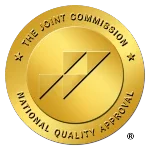Looking at Tremors and the Physical Signs of Complex Trauma
At its root, Complex Post-Traumatic Stress Disorder, or C-PTSD, is a form of PTSD that emerges from complex trauma. Anyone who has been through prolonged trauma, such as childhood abuse, domestic violence, war, persistent sexual abuse, or human trafficking, can develop C-PTSD.
Unfortunately, C-PTSD doesn’t just affect the mind. Mental health symptoms of C-PTSD are difficult enough to endure on their own, but physical PTSD symptoms can be just as disruptive. Under extreme stress, the body can have a number of physical responses. For example, tremors, shaking, or seizures.
The impact of traumatic events on the body can be long-lasting and debilitating. So, what should you know about Complex PTSD and tremors? They might actually be a protective response–and trauma treatment can help.
Let’s talk about whether Complex PTSD can cause tremors and why this response may occur first. Then, we’ll discuss CPTSD treatment approaches at Catalina Behavioral Health, how to achieve recovery, dual diagnoses, and other possible causes of tremors.
Confidential Trauma and PTSD Assessment
Can Complex Post-Traumatic Stress Disorder Cause Tremors?
Trauma disorders and traumatic events can have a profound impact on your body. Physical symptoms like chronic pain, stomach problems, and headaches are all very common in people with trauma disorders. Other physical symptoms of trauma can include but aren’t limited to tremors, shakes, seizures, muscle cramps, numbness, or tingling.
In other words, yes. Mental disorders like Post-Traumatic Stress Disorder (PTSD) and C-PTSD can cause tremors. The body’s ability to handle stress can only go so far, and you might experience shaking or trembling if your body is overwhelmed.
The Role of Stress Hormones in CPTSD Tremors

Why might Complex PTSD lead to a symptom like tremors? The body’s stress response, including the release of stress hormones, is likely the cause. When the body detects a real or perceived threat, the sympathetic nervous system is activated. At that point, stress hormones are released.
These stress hormones are released to protect you short-term. For example, a person may spring into action when experiencing this response if they are in a dangerous situation. If the danger is real, this may save their life.
That said, staying in a “fight or flight” state long-term can take a heavy toll on your well-being. Your body is overly hypervigilant and believes that it is in danger when it isn’t. This is what tends to happen to trauma survivors.
Trauma triggers set this response off, and the survivor is on high alert, causing toxic and chronic stress. This also tends to happen when people have panic attacks, which could lead to rapid breathing, shaking, sweating, and other symptoms.
Treating PTSD and Complex PTSD is possible. Although it may seem strange if you experience tremors as an involuntary reaction, research shows that you can actually use neurogenic tremors to help your body and mind heal from trauma.
Understanding Neurogenic Tremors and Tension and Trauma Releasing Exercises
Neurogenic tremors are one example of a natural stress response. They manifest in different ways and might impact various parts of the body, like the hands, legs, or voice (e.g., quivering of the voice, which may be noticeable to others). Neurogenic tremors can also be called therapeutic tremors, and there is a reason for this.
Neurogenic tremors are not a bad thing. When used therapeutically, they can actually discharge excessive tension in the body. In turn, tremors can be provoked by a treatment called Tension and Trauma Releasing Exercises (TRE).
TRE sessions are designed to trigger the central nervous system’s automated responses. Unlike the sympathetic nervous system response, this puts the body in a relaxed “rest and digest” state. TRE can provide physical and emotional relief from symptoms of trauma and stress. It can be used in conjunction with other therapies to address trauma comprehensively.
Studies support the use of TRE and self-induced therapeutic tremors, showing that they can improve quality of life outcomes.
Treatment Approaches for Complex PTSD and Tremors

What therapies might be used in conjunction with TRE? A number of different treatments can be used to address Complex PTSD symptoms. The treatment programs at our facility use a combination of treatments to address mental health conditions like Complex PTSD. These include but aren’t limited to the following.
- Cognitive processing therapy (CPT).
- Trauma-focused cognitive behavioral therapy (TF-CBT).
- Eye movement desensitization and reprocessing (EMDR).
- Supportive holistic treatments (e.g., meditation).
- Dialectical behavioral therapy (DBT).
- Medication management.
We also offer family therapy and many other treatment services. All Catalina Behavioral Health clients get a personalized treatment plan to ensure that their unique needs are met.
Catalina Behavioral Health offers a full continuum of care, which includes both inpatient CPTSD treatment programs and flexible outpatient treatment programs. If you aren’t sure what kind of treatment is right for you, our intake team can help.
Get Effective Trauma Treatment Options
Recovery and Healing from Complex PTSD and Tremors
Recovering from Complex PTSD is possible with the right treatment and support. Treating trauma can help relieve physical symptoms of trauma, including trouble sleeping, stomach pain, body tension, and tremors. Our programs for complex trauma survivors focus on:
- Understanding the ways trauma affected you and building a positive future.
- Helping the nervous system enter a relaxed state.
- Identifying personal trauma triggers.
- Developing coping skills for stress and trauma triggers.
- Building and maintaining healthy relationships.
In addition to standalone mental health and substance abuse programs, we offer dual-diagnosis treatment programs. Dual diagnosis programs are designed for those facing addiction and one or more additional mental health concerns.
This could be any type of mental illness or mental health concern, whether a trauma disorder, anxiety disorder, grief, a mood disorder like depression, or something else. Many people with PTSD or C-PTSD have one or more additional mental health conditions, and substance use disorders are very common in this population.
Diagnosing Complex PTSD
PTSD is diagnosed using the criteria listed in the most recent version of the Diagnostic and Statistical Manual of Mental Disorders (DSM). People with C-PTSD will meet the criteria for PTSD but experience additional symptoms, too. Largely, this is what sets PTSD and Complex PTSD apart. Those with C-PTSD often experience more severe trauma symptoms, which can include severe physical reactions that disrupt their daily life.
For a PTSD or C-PTSD diagnosis to occur, you must experience at least one avoidance symptom, one re-experiencing symptom, two arousal and reactivity symptoms, and two cognition and mood symptoms. A qualified professional, like a psychiatrist, can provide an official diagnosis. We have qualified professionals on-site who can formally diagnose mental disorders like Complex PTSD.
Ruling Out Other Causes of Tremors

What if you’re worried that your tremors are due to another cause? Physical signs of stress are just one possible symptom of Post-Traumatic Stress Disorder and C-PTSD. There are other possible causes of tremors, including but not limited to the following.
- Anxiety disorders, like panic disorder and social anxiety disorder.
- Physical health conditions (e.g., underactive thyroid).
- Drug and alcohol withdrawals.
- Medication side effects.
- Extreme stress.
If you suspect that your tremors are due to another cause, talk with your doctor. No matter how your trauma symptoms manifest, it’s integral that you seek help for trauma. Seeking help and support is often the first step in recovering from Complex PTSD and tremors or other symptom manifestations.
Contact Catalina for Help With C-PTSD and Tremors
Long-term trauma can have a serious impact on the body. Sometimes, it can have effects on the brain and nervous system that we don’t know how to stop on our own, including tremors. Treating trauma as a root cause matters. At Catalina Behavioral Health, we offer inpatient and outpatient care for individuals with C-PTSD and other disorders. Our team is here to help you or your loved one heal from traumatic events.
Reach out to Catalina Behavioral Health to learn more about our programs, verify your insurance coverage, or start the intake process today. To get in touch, call our admissions line.
Up To 100% of Rehab Costs Covered By Insurance
FAQs Regarding Complex PTSD and Tremors
What does it mean to store trauma in the body after a traumatic event?
Traumatic events can affect the brain and body, leading to changes in mood, behavior, physical well-being, and cognitive function. When trauma is held in the body, it can lead to physical symptoms that continue years or decades later that don’t go away on their own.
If you experience PTSD symptoms like tremors, it doesn’t mean that you did anything wrong or haven’t tried hard enough to heal. Overcoming trauma takes time. Through the healing process, you can relieve trauma stored in the body.
What are trauma shakes?
Shaking can be a natural reaction to trauma, overwhelm, and stress. When the brain detects a threat and sends a signal to the body that you are in danger, you may start to shake. Emotional flashbacks, where you feel an emotion that you experienced surrounding a traumatic event, could lead to shaking.
Emotional flashbacks are just one example of what might cause you to shake. One could also start to shake when met with physical reminders of a traumatic event, like a specific location.
What are the physical symptoms of complex trauma?
We often talk about emotional and psychological signs of complex trauma, like depression, flashbacks, or dissociation. However, people who endure complex trauma often experience bodily symptoms, too.
Shaking is just one possible physical symptom of trauma. Muscle pain, headaches, gastrointestinal distress or disorders, and other health conditions, like chronic pain and TMJ or TMD, are all common in trauma survivors.
References
- https://www.health.harvard.edu/staying-healthy/understanding-the-stress-response
- https://www.ncbi.nlm.nih.gov/pmc/articles/PMC4268601/
- https://www.ptsd.va.gov/professional/treat/essentials/complex_ptsd.asp
- https://www.ptsd.va.gov/professional/treat/cooccurring/ptsd_physical_health.asp#one
- https://www.ptsd.va.gov/professional/treat/cooccurring/index.asp
- https://www.ncbi.nlm.nih.gov/pmc/articles/PMC9792336/




